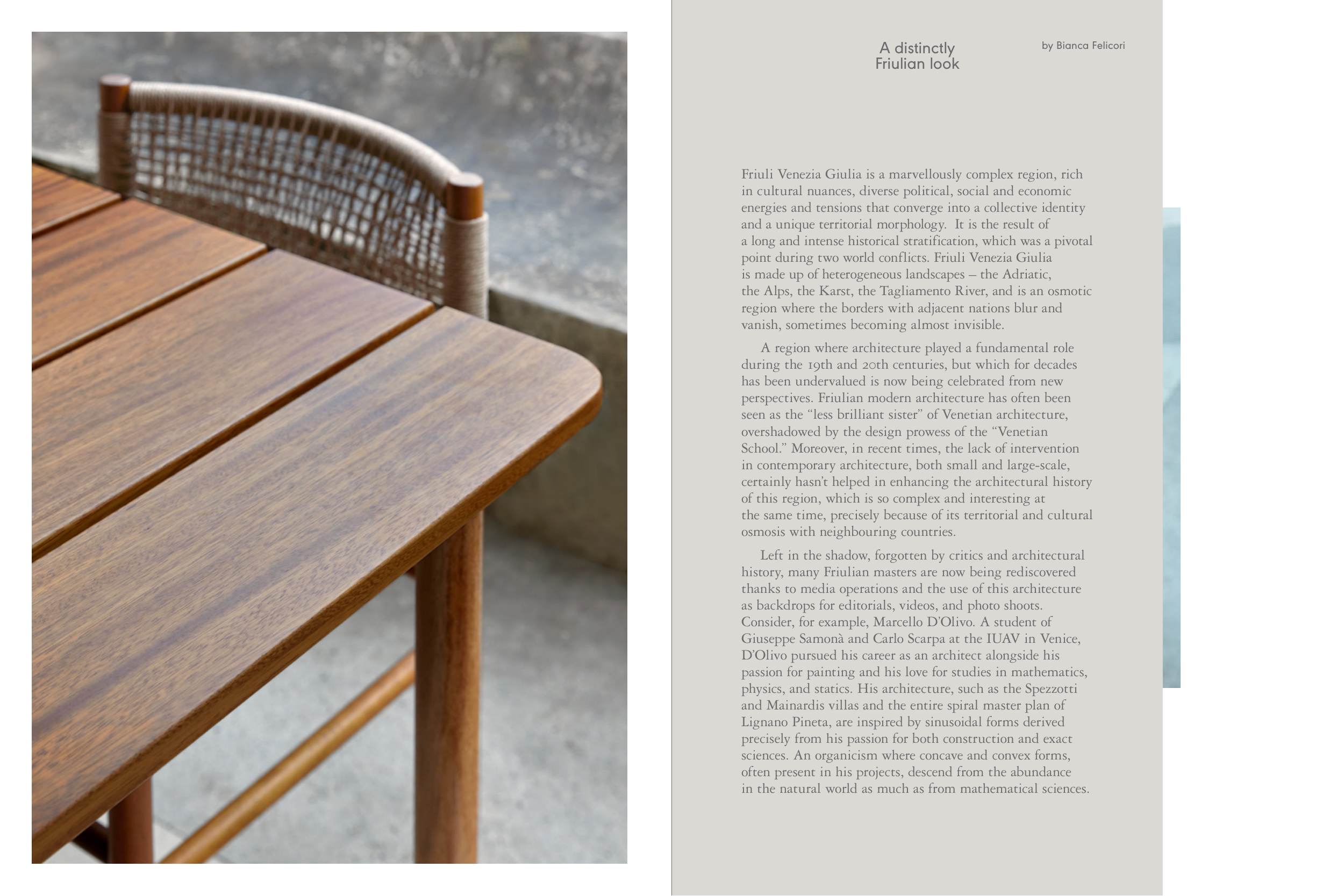67
by Bianca Felicori
A distinctly
Friulian look
Friuli Venezia Giulia is a marvellously complex region, rich
in cultural nuances, diverse political, social and economic
energies and tensions that converge into a collective identity
and a unique territorial morphology. It is the result of
a long and intense historical stratification, which was a pivotal
point during two world conflicts. Friuli Venezia Giulia
is made up of heterogeneous landscapes – the Adriatic,
the Alps, the Karst, the Tagliamento River, and is an osmotic
region where the borders with adjacent nations blur and
vanish, sometimes becoming almost invisible.
A region where architecture played a fundamental role
during the 19th and 20th centuries, but which for decades
has been undervalued is now being celebrated from new
perspectives. Friulian modern architecture has often been
seen as the “less brilliant sister” of Venetian architecture,
overshadowed by the design prowess of the “Venetian
School.” Moreover, in recent times, the lack of intervention
in contemporary architecture, both small and large-scale,
certainly hasn’t helped in enhancing the architectural history
of this region, which is so complex and interesting at
the same time, precisely because of its territorial and cultural
osmosis with neighbouring countries.
Left in the shadow, forgotten by critics and architectural
history, many Friulian masters are now being rediscovered
thanks to media operations and the use of this architecture
as backdrops for editorials, videos, and photo shoots.
Consider, for example, Marcello D’Olivo. A student of
Giuseppe Samonà and Carlo Scarpa at the IUAV in Venice,
D’Olivo pursued his career as an architect alongside his
passion for painting and his love for studies in mathematics,
physics, and statics. His architecture, such as the Spezzotti
and Mainardis villas and the entire spiral master plan of
Lignano Pineta, are inspired by sinusoidal forms derived
precisely from his passion for both construction and exact
sciences. An organicism where concave and convex forms,
often present in his projects, descend from the abundance
in the natural world as much as from mathematical sciences.


